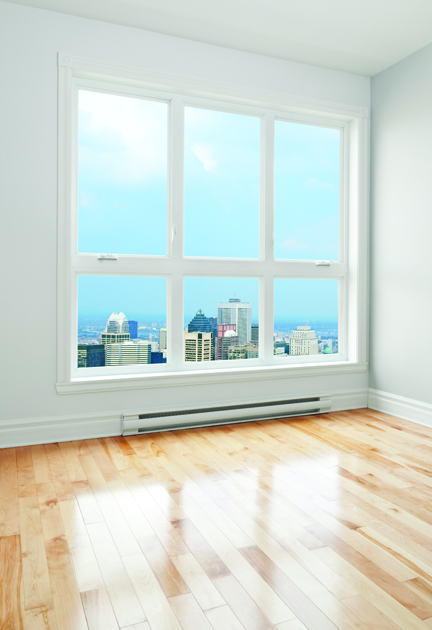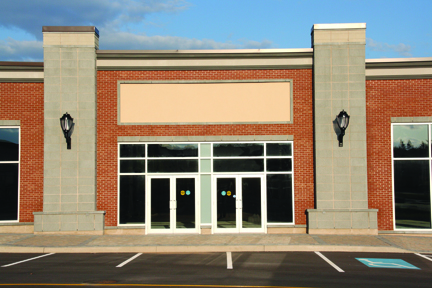 |
 |
 |
SPECIALTY LINES MARKETS
Unlocking the door to vacant buildings coverage Marketing & risk management tips for personal and commercial vacant properties
By Dave Willis From time to time, buildings go vacant. Perhaps a home owner switched jobs and relocated but couldn't sell the home right away. Or an older resident may have been moved to a nursing home or passed away, and the children haven't decided what to do with the house. On the business side, anything from a business shut-down to a move to larger quarters can leave space unoccupied. On both sides, investors scoop up foreclosure properties. According to Diana Matalka, assistant vice president, East Region Property Products for American Modern Insurance Group, vacant residential buildings are those that don't have an authorized occupant—someone who has the owner's permission to live there—residing in them, regardless of whether or not there are personal belongings or furniture in the building. In commercial, vacant buildings are those whose operations or daily business is no longer taking place, again, even if contents or property remain, notes Jason Kalinowski, director of commercial binding authorities, Quaker Special Risk. When buildings become vacant, special insurance comes into play. "Many homeowners policy forms contain vacancy limitations or exclusions that apply when the home is vacant for an extended amount of time," explains Matalka. "So, it is important to make sure that a vacant dwelling is insured on a vacant dwelling policy. If it's just going to be vacant for a short time, it might be possible to add a vacancy permission endorsement." According to Kalinowski, vacant building policies differ from one to the next. "Agents and brokers need to read the policy and understand what's covered," he explains. "It's equally important to be clear to the underwriter what plans exist for the vacant building. For instance, is it slated for resale, renovation, re-occupancy or, perhaps, demolition?" He notes that builders risk coverage is available for gut-rehabs and renovations. Not surprisingly, vacant buildings carry with them different—and often increased—risks from those that are occupied. "Often, there's an increased risk of vandalism, burglary, water damage from frozen pipes and even arson fires," notes Matalka. "Because of these higher risks, insurance companies will charge higher rates and limit the available coverages." To properly insure a vacant dwelling, the agent will need to make sure coverage is added for vandalism and malicious mischief, burglary and builders risk if the dwelling is undergoing major renovations. Rod Taylor, CIC, an independent consultant with 25-plus years of industry experience, says theft and vandalism coverage are most important. "Those are higher-frequency losses, but they also can be upwards of $50,000 or $60,000," he notes. "What sometimes happens is, as someone goes in to steal copper to resell, the damage they cause trying to access the copper actually can be the most costly part of a claim." He notes that some policies have sub-limits for these losses that may not reflect the potential risk. Other risks come from what might be called attractive nuisances. "For example, a car wash that's not in operation but whose doors are open could attract kids on skateboards," Taylor explains. "Restaurants with functioning cooking equipment and unsecured hotels and apartments carry with them vagrancy-related risks." Covering the risks Insuring vacant buildings poses certain challenges. "First, the agent or broker needs to find an insurance company that will write a vacant building," explains Matalka. "Many standard carriers will not write them, so the agent or broker may need to find a specialty insurance provider." Once a carrier is found, agents need to be sure they understand coverages and exclusions and properly communicate them to clients or prospects. "Specifically," Matalka notes, "they need to know how to protect the insured from vacancy claims such as stolen copper wiring. Is it completely excluded? Or can it be covered in the vandalism and malicious coverage, or burglary coverage or both?" Underwriters are looking to cover vacant buildings that don't include unnecessary risks. "Insurers are generally pretty guarded when it comes to buildings with heavy machinery or equipment around them," Taylor says. "You don't want something kids could play on and, as a result, get injured." "Tough economic conditions often lead to increased theft and vandalism," notes Kalinowski. "The cost of copper and other metals that can be stolen and resold represents an attractive nuisance for these types of risks." Weather unpredictability is another issue. "Property owners should remove items that could suffer weather-related damage, and they should make sure the building is able to handle the elements." Properties held by large investors also pose certain problems. "Investors that just sweep in and buy up vacant properties are sometimes looking just to cover their financial investment, which could be just a fraction of the building's value," Taylor explains. "We explain to them that coverage is not for an agreed amount, but rather for actual cash value or, in certain situations, replacement cost." Absentee—or inattentive—investors or owners sometimes carry other challenges. "We want to make sure properties are visited regularly," Taylor says. "Locally owned buildings, perhaps family properties or those owned by local business people, tend to receive greater attention and are better risks."
Find and serve Taylor says agents and brokers who have a good understanding of the real estate market can find opportunities to write vacant buildings coverage. "Professionals in the real estate business—whether they're real estate agents or attorneys or mortgage brokers—tend to network with each other," he explains. "They know when properties come up or when they might be sitting vacant for a while. Insurance agents should be part of these networks. "We work with a lot of agents who have learned how to work these networks, and they get a lot of referral business," he adds. "Vacant property is not necessarily easy to write all the time, and once they've established themselves as experts, they end up with a lot of referrals, even from other agents." Matalka concurs. "Agents and brokers should network with investment companies, real estate agents and lending institutions," she says. "Stop in for a visit and explain how you can help, and see if there's a need." She also encourages agencies to include information about vacant buildings and vacant buildings insurance on their Web sites, to help generate leads from Web searches." Advertising vacant buildings coverage could yield positive results, as well, Kalinowski notes. "Let people in your local community know that you have markets to place this type of insurance," he explains. "Talk about the various coverage options, including replacement cost for newer buildings recently vacated. Also, discuss term options, which range from three to 12 months; coverages and exclusions that can address varying customer needs; and multiple options for premium payments." Taylor says opportunities may exist within an agency's client base. "You may already be working with an individual or business that invests in properties," he explains. "Also, by staying close to your existing customers, you'll know when they're facing a life situation that may lead to a building becoming vacant." While prospecting and selling policies is important, helping insureds minimize losses reinforces a strong reputation in the vacant buildings insurance arena. Communication is an important element of this. "Notify all local municipalities and public service companies when a building is going to be vacant," explains Kalinowski. "Make sure mail service is suspended, as well, since the accumulation of mail could be a tip that a building is unoccupied." Maintenance and attention to the property also are key. "Someone needs to visit the property regularly," explains Taylor, "and that means more than just opening the front door and peeking in. One of the biggest problems we see is water damage. A pipe leaks or a refrigerator or ice maker leaks without anyone noticing, and then weeks down the road you end up with damaged floors. Someone needs to do regular and thorough walk-throughs." Kalinowski says to check on other things that could cause further loss. "Make sure there are no roof leaks, that the sump pump is operational, and that gutters are clean," he says. Check-ins are especially important after bad weather, he notes. He also encourages keeping up on the building's exterior. "If you let items like the lawn, mail, or weather-related items go, that can possibly attract vandals," he says. "If a building owner is not able to check the property weekly, someone should hire a property manager to do that—and to maintain the property," says Matalka. "Where appropriate, board up windows and secure the building to prevent vandalism and squatters. "To prevent frozen pipes and water damage, shut off the water and drain the pipes or ensure that the heat is maintained in the building," she adds. "Continue to maintain the property to let intruders know that you are checking the property and that the building has not been abandoned." Finally, says Kalinowski, address security. "Be certain that all doors and windows are locked, and consider using or installing additional locks to boost building security," he says. "Make sure proper lighting exists around the building and that it's operational. Also, if security systems or cameras are present, make sure they are functioning, as well." By understanding the market, knowing how and where to find clients, and helping insureds reduce potential losses, agents and brokers can find a comfortable home in the vacant buildings insurance marketplace.
|
|||||
| |||||
| ©The Rough Notes Company. No part of this publication may be reproduced, translated, stored in a database or retrieval system, or transmitted in any form by electronic, mechanical, photocopying, recording, or by other means, except as expressly permitted by the publisher. For permission contact Samuel W. Berman. |

